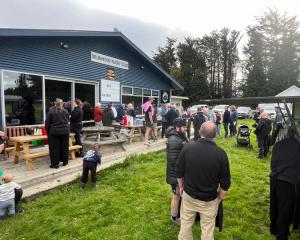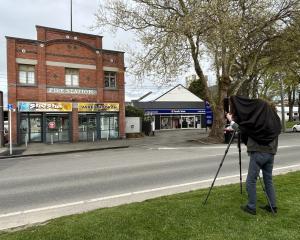Indigenous tussock land protected by Te Papanui Conservation Park and Stoney Creek Scenic Reserve is at risk of being invaded by wilding trees, Emeritus Prof Sir Alan Mark says.
Landcorp is planting 189ha of Douglas fir on a section of Waipori Station next to Te Papanui and Stoney Creek - work that does not need a resource consent.
In an open letter to the Minister of State-owned Enterprises Tony Ryall, Prof Mark called for the plantings to be removed and any further plantings being prohibited.
"Because of ... their clear threat of predictable and highly undesirable spread on to prime conservation tussock lands, currently free of wildings."
Prof Mark and the 10 signatories to the letter were also deeply concerned the proposed mitigation measures, 100m to 250m unplanted buffer zone and double perimeter of ponderosa pine, would be "ineffectual in minimising infestation of adjoining conservation lands ... given the very windy nature of the site".
"It is the worst possible location to plant a stand of Douglas fir - a narrow area between two prime conservation areas."
The area was highly vulnerable to invasion which was shown by Landcorp's own consultants which rated the area at high risk of spread from the plantation into native vegetation, Prof Mark said.
He was part of a voluntary group that had worked on the Landcorp area removing wilding pines.
"It was an insult to walk on to this land and have this confront us."
It was essential to put a stop to the problem now as if wildings established in the area it could cause a multimillion-dollar problem such as in Mid Dome where a $12 million, 12-year eradication programme was under way, he said.
Department of Conservation Coastal Otago area manager Robin Thomas said the department did have concerns about that type of planting on the boundary of high value areas such as Te Papanui and Stoney Creek.
"It will highly likely have some impact on the reserves but it's a wee bit hard to quantify the extent."
It was very labour-intensive to find wilding trees and it was "easy to miss them" so it would "stretch" Doc's resources to control any sort of seeding from such a plantation, Mr Thomas said.
The land was in the Clutha District Council area but it did not require a resource consent as there were no controls regarding wilding pines in its district plan.
Council planning and environment officer Murray Brass said the district plan was being reviewed and there was a proposal to tighten up regulations around removal of indigenous vegetation but it would not prevent the planting of trees.
It was an issue that could become more prevalent in the district as forestry became more attractive in the carbon credit age, Mr Brass said.
Landcorp chief executive Chris Kelly said specialist advice Landcorp had received indicated the buffer zone around the plantation would be effective at preventing spread.
The area would be sprayed and any trees that "escape" would be killed.
Douglas fir were not as "rapacious" as contorta pines but the company would monitor the situation and if in three years' time the trees were creeping on to conservation land, then the planting would be reconsidered.
The 189ha planting was stage one of a proposed 500ha forestry planting of an area considered to be more profitable gaining carbon credits than from farming.
However, it was just a small portion of the 18,000-20,000ha Waipori Station, he said.
A spokeswoman for Mr Ryall said his office was in the process of responding to Prof Mark.












